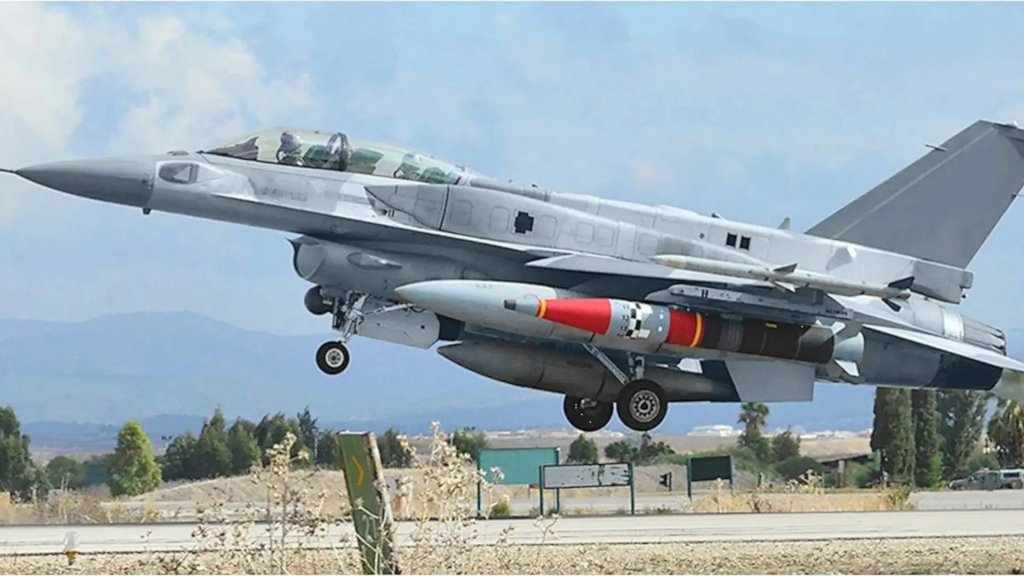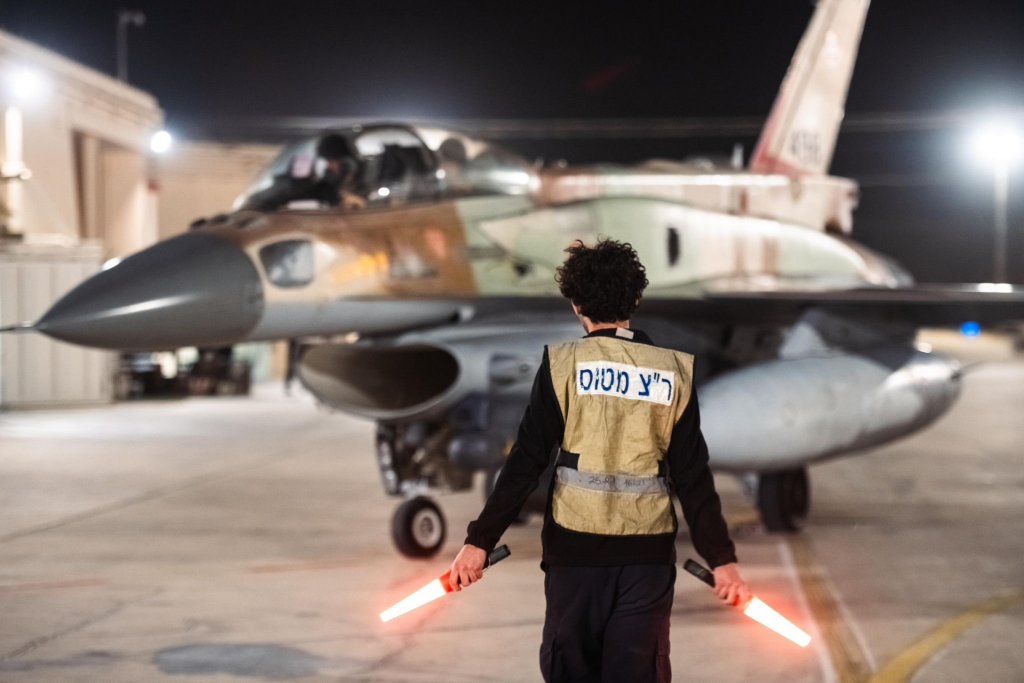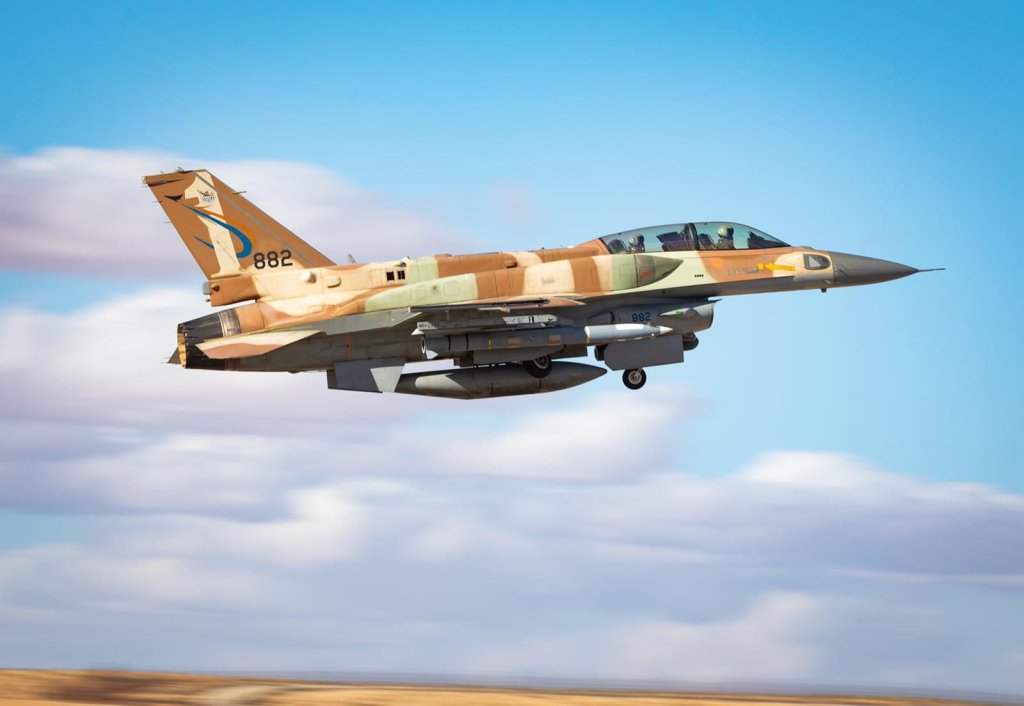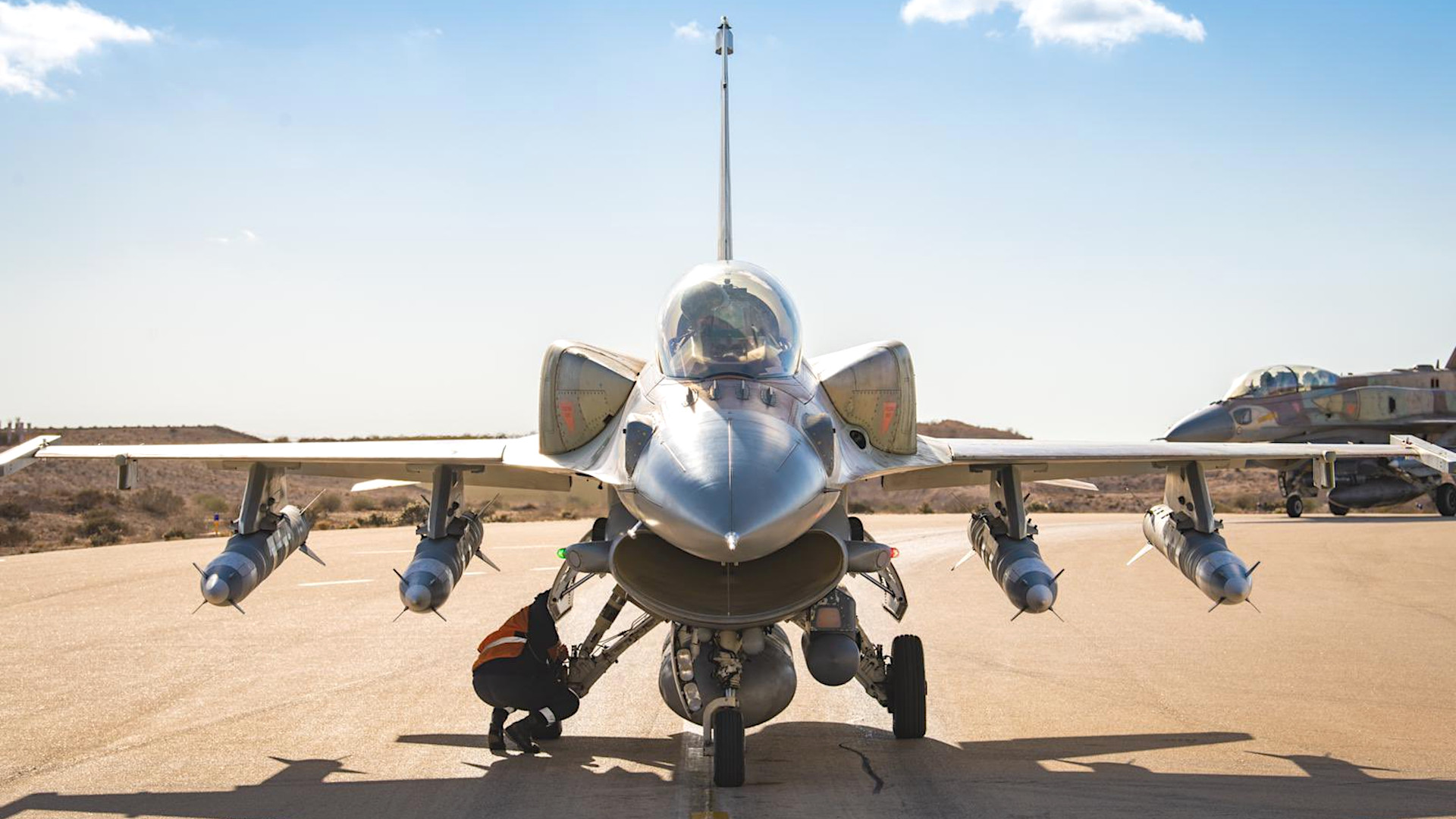The Israeli Air Force (IAF) has released a rare picture of an F-16I fighter armed with four Rampage missiles, an adaptation of a ground-launched precision-guided artillery rocket. The image was used to with an announcement about Israel’s killing of Mustafa Ahmad Shahdi, a top Hezbollah commander, though it is unclear if Rampages were used to deliver that strike. Rampage is part of a growing arsenal of Israeli air-launched ballistic missiles and other similar aerial munitions, the significance of which has come into sharp relief this year, especially in recent retaliatory strikes on targets in Iran.
“ELIMINATED: Deputy Commander of Hezbollah’s Radwan Forces, Mustafa Ahmad Shahdi,” an IAF social media post accompanying the picture reads. “Shahdi advanced numerous terrorist attacks against Israel and oversaw attacks against IDF [Israel Defense Forces] soldiers in southern Lebanon.”
Hezbollah’s Radwan Force is typically described as the Lebanese terrorist group’s most elite formation and has been employed to conduct various highly specialized missions over the years, including infiltrations into Israeli territory. The IDF has dramatically stepped up operations targeting Hezbollah’s top leadership, as well as attacks on more rank-and-file members and its missile and other capabilities, since September. This includes the killing of Hassan Nasrallah, the long-time head of Hezbollah, and the group’s number two official Hashem Safieddine. Naim Qassem, previously Hezbollah Deputy Secretary General, was just named as its new leader this week.
“He [Shahdi] was also previously responsible for the Radwan Forces’ operations during combat in Syria in 2012-2017,” the IAF social media post continues. “Eliminating Shahdi is part of the effort to degrade Hezbollah’s Radwan Forces’ capabilities to direct and execute terrorist activities against IDF troops and communities in the northern border, in particular the ‘Conquer the Galilee’ plan.”
The post does not explicitly say that Rampage-armed F-16Is were used to strike Shahdi, who was reportedly targeted near the city of Nabatieh in southern Lebanon, which sits around 20 miles north of the border with Israel. It would seem curious for a relatively advanced standoff munition to have been employed against a target relatively close by above which Israeli aircraft operate over regularly.
Still, since it first emerged publicly in 2018, the Israel Aerospace Industries (IAI) missile has been pitched as an ideal tool for carrying out short-notice strikes on time-sensitive and well defended high-value targets, and doing so with significant stand-off range, reducing risks to the launching aircraft. The weapon’s supersonic speed presents challenges for any air defenses attempting to intercept it, as well. That could also help them burrow deeper into hardened targets.

It’s worth noting here that IAI does not explicitly define Rampage as an air-launched ballistic missile. However, the line between large-caliber guided artillery rockets like the one Rampage is derived from, which do follow ballistic trajectories to their targets, and what are more traditionally considered short-range ballistic missiles (SRBM) is increasingly blurry. The U.S. military notably includes guided artillery rockets with diameters as small as 122mm in its current definition of close-range ballistic missiles (CRBM), a subset of SRBMs with ranges under 186 miles (300 kilometers).
Beyond Israel, India is also known to have purchased Rampages and there have been reports that Greece is looking to do so, as well.
Whether or not Rampages were used to strike Hezbollah’s Shahdi, the importance of it and other air-launched ballistic missiles in Israel’s inventory cannot be understated. At least three other aeroballistic missiles have been identified as being available to the IAF now, including the Rafael Rocks and the IAI Air LORA. A recently leaked U.S. intelligence document mentioned an Israeli air-launched ballistic missile called Golden Horizon, as well as Rocks, but provided no details.


Air-launched ballistic missiles were used in Israel’s strikes against Iran in April and there is visual evidence of this from debris recovered in Iraq afterward. The wreckage also pointed to the weapons being fired from well outside of Iranian airspace, underscoring the aforementioned stand-off range benefits that weapons like Rampage, Rocks, and Air LORA offer. That range is doubly important for Israel, which has limited aerial refueling capabilities that it can use to extend the combat radius of launch platforms like the F-16I. It also allows for attacking highly defended targets at distance without major support packages traditional required to enable those kinds of strikes as well as all the risk of executing such an operation inside hostile airspace. Compared to cruise missiles, air-launched ballistic missiles are more survivable in many circumstances and hit much harder.
Air-launched ballistic missiles are understood to have been the central component of Israel’s more recent strikes against Iran just last week, which targeted a slew of air defense, missile production, and other high-value sites across the country. Evidence of their use has again emerged from debris subsequently found in Iraq.
The IAF’s release of the picture today can also be seen from a broader messaging perspective, publicly highlighting capabilities that have helped it conduct precision strikes against prized targets even deep inside Iran and, at least so far, do so with apparent impunity.

Altogether, Israel’s employment of an increasingly diverse array of air-launched ballistic missiles only looks set to grow and we could get more glimpses of these capabilities as a result.
UPDATE: 5:15 PM EST —
The IAF has released another picture of a Rampage-armed F-16I, seen below, again in a social media post along with an update on operations against Hezbollah in Lebanon that does not explicitly mention the use of these missiles.

“Hezbollah’s Logistical Reinforcement Unit 4400 in the Beqaa Valley is responsible for transferring weapons from Iran and its proxies to Hezbollah in Lebanon. Earlier today, the IAF conducted intelligence-based strikes on fuel depots located inside military compounds belonging to this unit,” the accompanying social media post reads. “These fuel depots supplied fuel for Hezbollah’s military vehicles and were critical to their operations. Additionally, the fuel was supplied by Iran as part of its military support for Hezbollah.”
Iran funds Hezbollah through the Quds Force of Iran’s Islamic Revolutionary Guard Corps, transferring oil and money via various channels to Lebanon,” it continues. “The Hezbollah terrorist organization continues to stockpile large quantities of fuel for its terrorist activities and attacks on Israel.”
Contact the author: joe@twz.com
